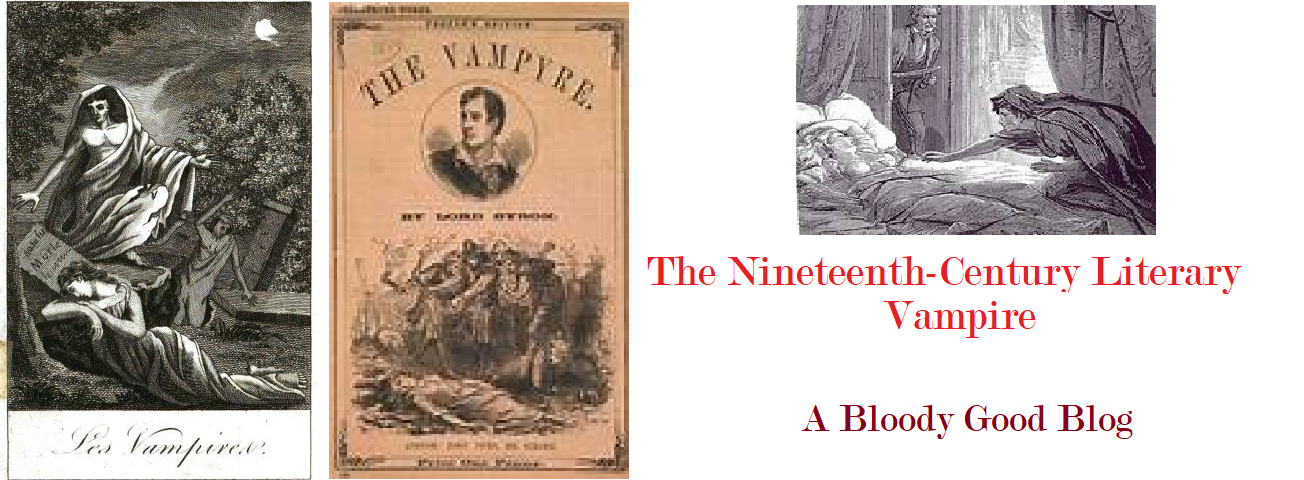We’ve heard of Dracula, Varney, Edward, and the Salvatore brothers, Stefan, and Damon. Why haven’t we heard of Carmilla? When we hear about vampires, most of us would assume a male vampire like the ones mentioned above. As time goes on, I start noticing a shift in the male vampire’s character. They’re no longer looked at as this intimidating, spine-chilling creature, but as these “heroes.” We connect to them and end up cheering them on throughout their conflicts. Why hasn’t a female vampire been given an opportunity for this kind of storyline?
If I am being honest, I have not been immersed into the Gothic Vampire Literature until recently. I was a fan of Twilight, and the Vampire Diaries. I had minimum knowledge of Dracula or really any true vampire literature. As I read more and more texts, I noticed this male dominance throughout these stories. Not only in supporting characters but in the vampire character as well. An example is in Varney the Vampire, the character Mr. Chillingworth was extremely dismissive to Flora and her experience. “Henry visits the doctor, a Mr. Chillingworth, who rejects the vampire theory while simultaneously pointing out its potential to explain the circumstances” (Rymer). All the other texts/literature stem off from Varney, which is why there may be this ongoing gender difference. Looking at a more present text, like Twilight and the Vampire Diaries. In the beginning we are given this stereotype of these characters. They’re made out to be mysterious and as if they should be approached with caution. As we start to unravel who these characters are, we begin our connection to them. We, as readers, start to understand where they come from and why they must do what they do, even if it is dangerous. The change is that these characters are now made out to be “good guys.” Which is a great shift to see throughout this Gothic Vampire Literature genre. We still have the girl in distress, and the mysteriousness of the vampire which keeps readers on their toes on if he’s going to bite her or if he can curve his hunger for her to live.
These stories are great stories, but when can a lead female vampire enter the chat? Don’t get me wrong, I understand that we have Carmilla. I felt that Carmilla was not the best start to shift the gender roles in this genre. In Britain in the 1870s, women demanded rights as laborers. This movement was not accepted by most men, especially when women wanted to be considered–as one journalist put it in 1872, the year Carmilla was published, as “free agents”“free agents” (Feurer 236). I thought Carmilla not only needed a different direction but could have been a different story with the right author. We can see the male vampire storylines switching to this heroic person, so why can’t a female vampire do the same? Judith E. Johnson argues that recent female authors of vampire fiction have changed the metaphorical message of the vampire. Johnson believes, “female-written vampire stories are more utopia than nightmare, even when the utopia fails to hold” (Johnston 80). She mentions that they include more positive messages about women, feminism, and homosexuality. Again, this is a great start, but these are female authors, we are still not talking about a lead female vampire.
Why do we need a lead female vampire? It’s already noticeable that female authors are including more positive message about various topics. Imagine what can be done with not only the female author but adding a lead female vampire character. I feel there are so many influential avenues this could potentially go. Looking back at when Twilight came out, so many fans were in awe over Alice. The fans adored her because she wasn’t the damsel in distress. She was a confident, smart, and powerful character. The same goes for Elena in the Vampire Diaries, at first, she does start out as the typical girl needing saving, but we watch her grow into this confident female vampire. Without this kind of development in her character, there really couldn’t have been many ways the story line could go. And it’s a great thing the authors went that route because we are still given our typical mysterious vampire story with a twist of female power.
After reflecting on these stories, I think it is time to ditch the male vampire stalking his prey through their window and traumatizing readers. It is time to go in the route with a strong, independent, badass, lead female vampire. The love storyline is an added bonus but could strive without it as well. Thinking about all of this, Twilight could have done a spin off about Alice and her journeys. I really believe that Judith Johnson is correct about female authors creating vampire stories being an utopia and maybe even more so with a lead female vampire.
Works Cited
Feurer, Rosemary. “The Meaning of ‘Sisterhood’: The British Women’s Movement and Protective Labor Legislation, 1870-1900.” Victorian Studies, vol. 31, no. 2, 1988, pp. 233–60. JSTOR, http://www.jstor.org/stable/3827971Accessed 30 June 2023.
Grismer, Chris, et al., directors. The Vampire Diaries. Season 1–8, 10 Sept. 2009.
Hardwicke, Catherine, et al., directors. The Twilight Saga. Accessed 11 July 2023.
Image:https://commons.wikimedia.org/wiki/File:Sharon_Tate_and_Roman_Polanski_in_The_Fearless_Vampire_Killers_(1967).jpg
Johnson, Judith E. “Women and Vampires: Nightmare or Utopia?” The Kenyon Review, vol. 15, no. 1, 1993, pp. 72–80. JSTOR, http://www.jstor.org/stable/4336803. Accessed 30 June 2023.
Rymer, James Malcolm. Varney the Vampire: Or, the Feast of Blood: The First in a Series of Gothic Novels, ed. Devendra Varma. New York: Ayer, 1998 .
